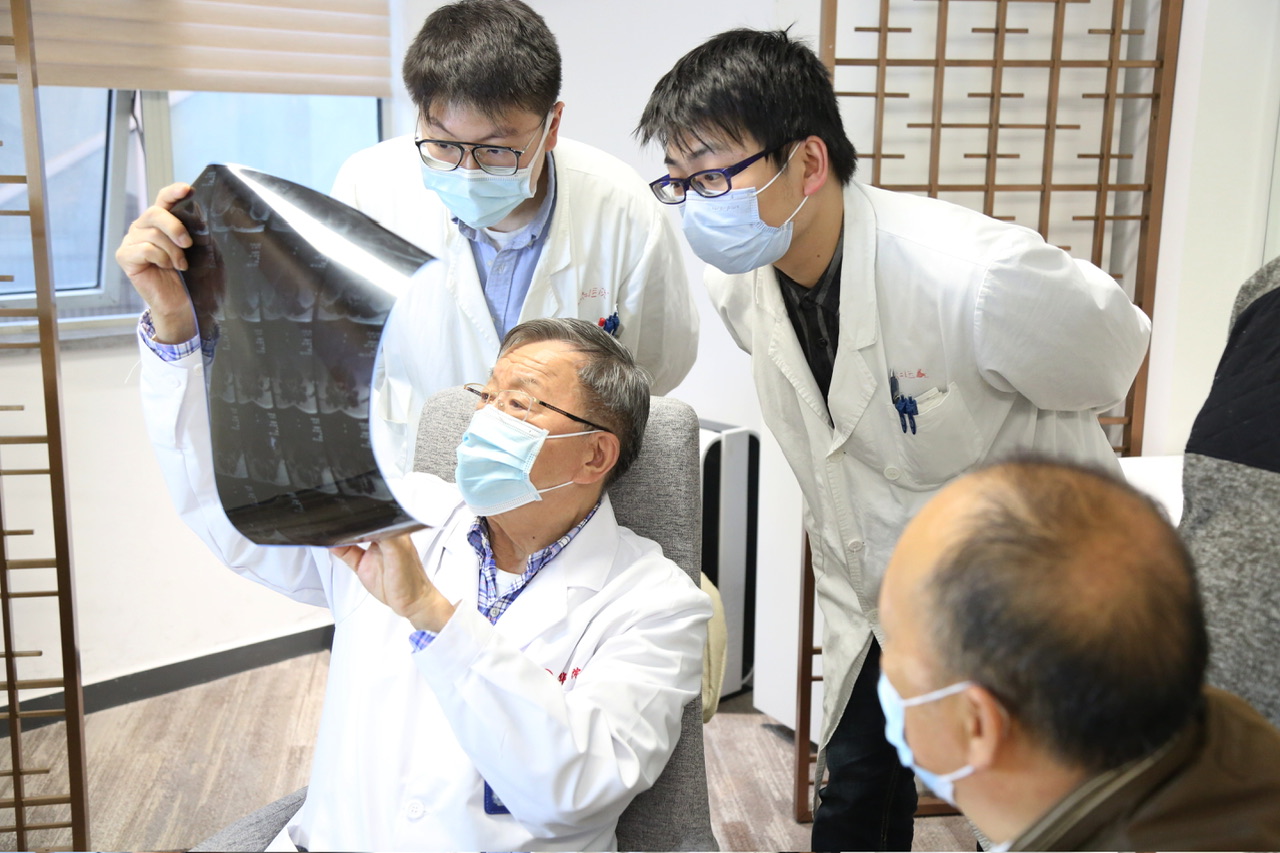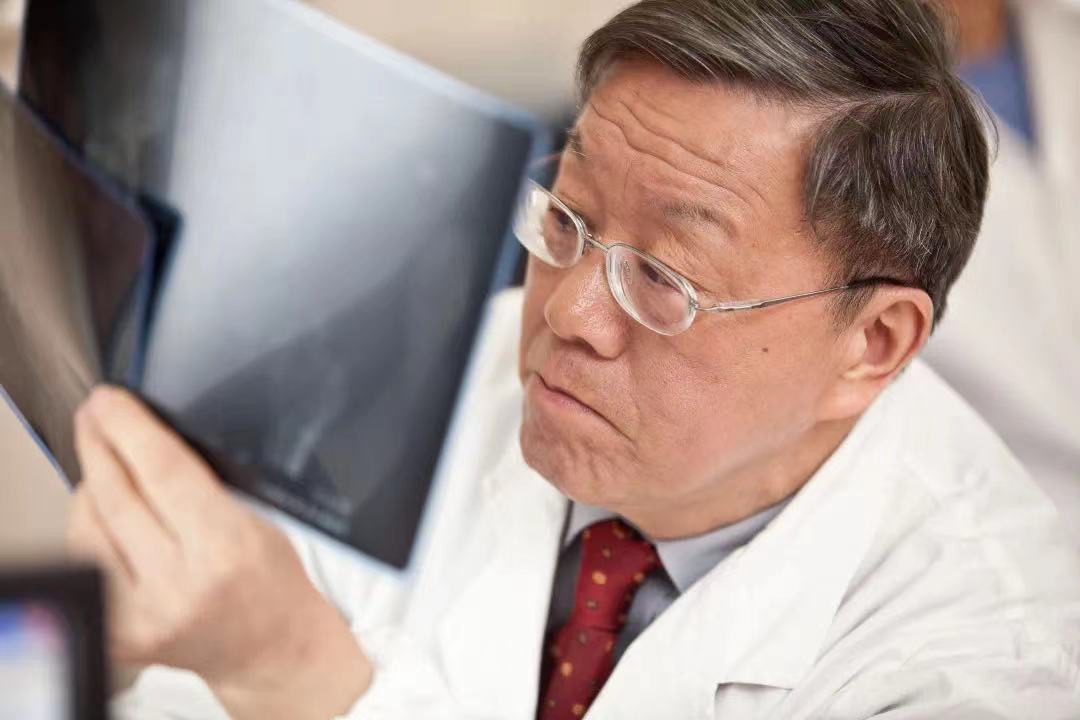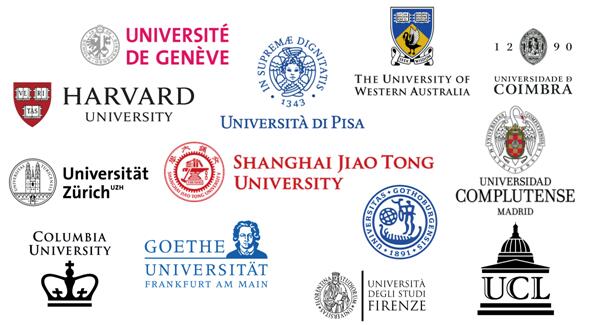Chinese medicine master Shi Qi innovatively explores the "treasure of traditional Chinese medicine" to relieve the pain of the people. Despite his 60th anniversary in the medical profession, he still adheres to clinical consultation and treatment | muscles and bones | traditional Chinese medicine
The 6th Shixiaoshan Traumatology Academic Inheritance and Innovation Forum and the 60th Anniversary Academic Seminar of Professor Shi Qi, a renowned Chinese medicine expert, have been held today. It has been announced that the strategic agreement for the "Joint Research Laboratory of Chronic Muscle and Bone Disease Treatment and Rehabilitation" for spinal diseases has been officially signed, led by Professor Shi Qi, a renowned Chinese medicine expert, to form a series of new traditional Chinese medicine drugs and clinical plans for the diagnosis, treatment, and rehabilitation of chronic muscle and bone disease, aiming to improve the diagnosis and treatment level of chronic muscle and bone disease. Chinese medical masters Liu Jiaxiang, Sun Guangrong, and Zhang Boli delivered speeches at the seminar.
Professor Shi Qi has been practicing medicine for 60 years. He upholds the belief that "ancient people have no limits to knowledge, and when they are young and old, they start to mature. When they are young and old, they end up feeling shallow. When they know this matter, they must practice it." Even today, at the age of 80, he still insists on attending weekly consultations on the clinical front line, seeking medical advice and guidance for the people.
Exploring Traditional Chinese Medicine Therapy for Muscle and Bone Pain by Learning from Famous Schools
To preach, impart knowledge, and dispel doubts is for great doctors. Shi Qi was born into a family of traditional Chinese medicine, and his grandfather was a famous local doctor. He was influenced by traditional Chinese medicine culture from a young age and aspired to become a traditional Chinese medicine doctor. In 1957, he was admitted to the former Shanghai University of Traditional Chinese Medicine with the original intention of pursuing his dreams. Through the lectures of numerous renowned doctors at sea, he received the influence and baptism of the Shanghai style traditional Chinese medicine. In 1963, after graduating from Shiqi University, he became a disciple of Professor Shi Xiaoshan in the Department of Traumatology at Longhua Hospital. Later, he was taught by Professor Shi Youshan and gained insights into the extensive and profound nature of Shiqi's traumatology. He inherited his legacy and became the fourth generation successor of Shiqi's traumatology. From then on, he began practicing medicine and teaching for 60 years.

In the process of aging population, chronic musculoskeletal diseases have become a health hazard. It is estimated that about 300 million people in China suffer from chronic musculoskeletal disorders. Many people think that bone and muscle disease is a modern disease, but in fact, this is a misunderstanding. Shi Qi said, "As early as 3000 years ago, there were records of bone diseases in the Book of Rites of Zhou. There were many cases of neck pain and hand numbness, such as riding horses and marching, working all day long, and emperors and generals lying down to review memorials. This precisely confirms that traditional Chinese medicine has rich experience in the treatment of orthopedics and traumatology.". The strategy of better serving the construction of a healthy China, leveraging the advantages of traditional Chinese medicine, and focusing on the diagnosis, treatment, and research of chronic musculoskeletal diseases throughout the entire process have become the exploration of Shi Qi and his team for many years.
Learn the true scriptures and apply the treasures of traditional Chinese medicine to social "big issues"
Today's seminar premiered the "Selected Works of Shi Qi's Medical Literature", which includes some medical papers, prefaces, essays, and speeches written by the team led by Shi Qi since his 60th anniversary of teaching medicine. This provides valuable reference for colleagues and young students engaged in clinical, teaching, and scientific research in traditional Chinese medicine. Few people know that Shi Qi, who initially wanted to learn traditional Chinese medicine and internal medicine, was selected by his teacher to go to the orthopedics and traumatology department due to his intelligence and strong hands-on ability after graduation.
After learning the true biography of Shi's Department of Traumatology, for 60 years, Shi Qi traveled to the doctor's field and used the method of traditional Chinese medicine syndrome differentiation and comprehensive treatment to treat countless cases of bone diseases, including various types of intervertebral disc herniation, neck and back pain, shoulder and knee pain, etc. As a renowned traditional Chinese medicine practitioner, Shi Qi's vision is not limited to treating illnesses and saving lives, but he also considers the "big issue" of balancing medical resources with social development. Surgery consumes enormous medical resources. If the treasures of traditional Chinese medicine can be promoted and widely applied, it will bring benefits to more patients. His theory has been clinically verified: Shi's "internal treatment method" stresses the internal and external use of drugs, combined with acupuncture and moxibustion, and more than 80% of patients can be cured clinically, without the need for surgery. Shi Qi also led the team to establish the "balance adjustment method", forming a muscle bone balance rehabilitation system; We have established techniques and methods with traditional Chinese medicine characteristics and advantages, such as "Shi's Twelve Character Health Preservation Technique", "Spinal Balance Exercise", "Muscle and Bone Balance Exercise", and "Three Steps and Nine Methods for Neck Treatment", which have been promoted both domestically and internationally.

Teaching and educating, cultivating more than 400 high-level students all over the world
Inheriting the essence and keeping integrity and innovation are the principles of the inheritance and development of traditional Chinese medicine. Seven years ago, when his alma mater Shanghai University of Traditional Chinese Medicine was established 60 years ago, Shi Qi, as the former president, donated 60000 yuan from his own pocket. "When I stepped into the school, the student handbook wrote - 'Cultivate advanced traditional Chinese medicine practitioners with socialist consciousness and wholeheartedly serve the people.' Many years have passed, and this sentence is still outdated to this day." He urged himself in this way, and even more so inspired his students.
After more than 30 years of hard work, the orthopedic discipline team led by Shi Qi has become a national key discipline, and has trained and guided more than 400 master's, doctoral, postdoctoral, and apprentices. The disciples are distributed in 25 provinces and cities across the country and overseas, and have become the leader of traditional Chinese medicine orthopedic science in China. Their academic achievements are also well-known in Xinglin. Now, the orthopedic department team has transformed Longhua Hospital's orthopedic department into a clinical highland with distinctive features in Shixiaoshan's orthopedic department. It has built an innovative research platform for traditional Chinese medicine that is deeply integrated with modern technology and competitive nationwide. It is also a cradle for cultivating high-end talents in traditional Chinese medicine in the new era, continuously contributing more talents to the traditional Chinese medicine industry.
It is reported that today's seminar will be divided into special forums such as the "Shixiaoshan Traumatology Academic Alliance Discussion and Exchange Meeting", "Shiqi National Medical Master Academic Thought Exchange Meeting", and "Traditional Chinese Medicine Phenomics and Precision Medicine Exchange Meeting". Dozens of well-known domestic and foreign experts and scholars from well-known universities and research institutions such as Tsinghua University, Peking University, Shanghai Jiao Tong University, Zhejiang University, Fudan University, The Chinese University of Hong Kong, and Sichuan University, as well as sister universities from Guangdong, Jiangsu, Gansu, Jiangxi, Beijing, Shanghai, Tianjin, Chengdu, and other regions, as well as the construction unit of the Shixiaoshan Traumatology Academic Alliance, brought wonderful and diverse lectures to the attendees.





